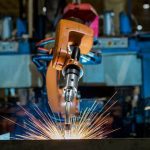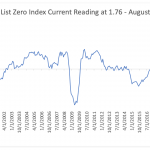The fabrication industry has spent years being sloppily lumped as a subset of manufacturing. Manufacturing is the process of taking raw goods and making a finished product. Fabrication performs roughly the same function.
Thus, manufacturing and fabrication sometimes present as the same but simply aren’t. As Sarah DeGuzman helpfully outlines, manufacturing and fabrication form two distinctly separate disciplines with different outputs and ways of doing business. Indices such as the IHS Health Kit US Manufacturing PMI simply don’t lend much value to fabrication operations.

In my profession as a technical leader and solutions provider, measurements of true fabrication industry health have always been anecdotal.
I talked to Benny over at Quadruple W Pumps and he said there’s some a Pre-FEED study on that new play over in Uganda. We might see some work out there in a year or so.
Those conversations fused hope or dread into many a fabricator. What they haven’t done is provide an objective industry health measurement. Seeing this need, we turned over the idea internally. How could we effectively benchmark the fabrication industry’s health using available data and our understanding of the business?
The PL0 Index
We soon found ourselves collaborating with the economist Giancarlo Salazar-Caicedo of Econometricus. And over a series of conversations, we sketched out a plan:
- Determine applicable NACIS codes that pertain to fabrication activities
- Obtain economic activitity associated with those fabrication activities
- Generate a Cobb-Douglas production function that suits the fabrication sector
- Benchmark against existing economic data to produce a numerical measurement of the fabrication industry health
After months of conversations, reports, and tweaking, we are happy to introduce the PL0 Index, a way to objectively determine the health of the fabrication industry
What We Can Learn From The PL0 Index
The index provides an objective look into the health of the fabrication industry as it pertains to economic health in that sector. It is not intended to be holistic and tell you how much or when to hire. But it should be a useful data point in the always evolving brew of metrics that impact decision making.



